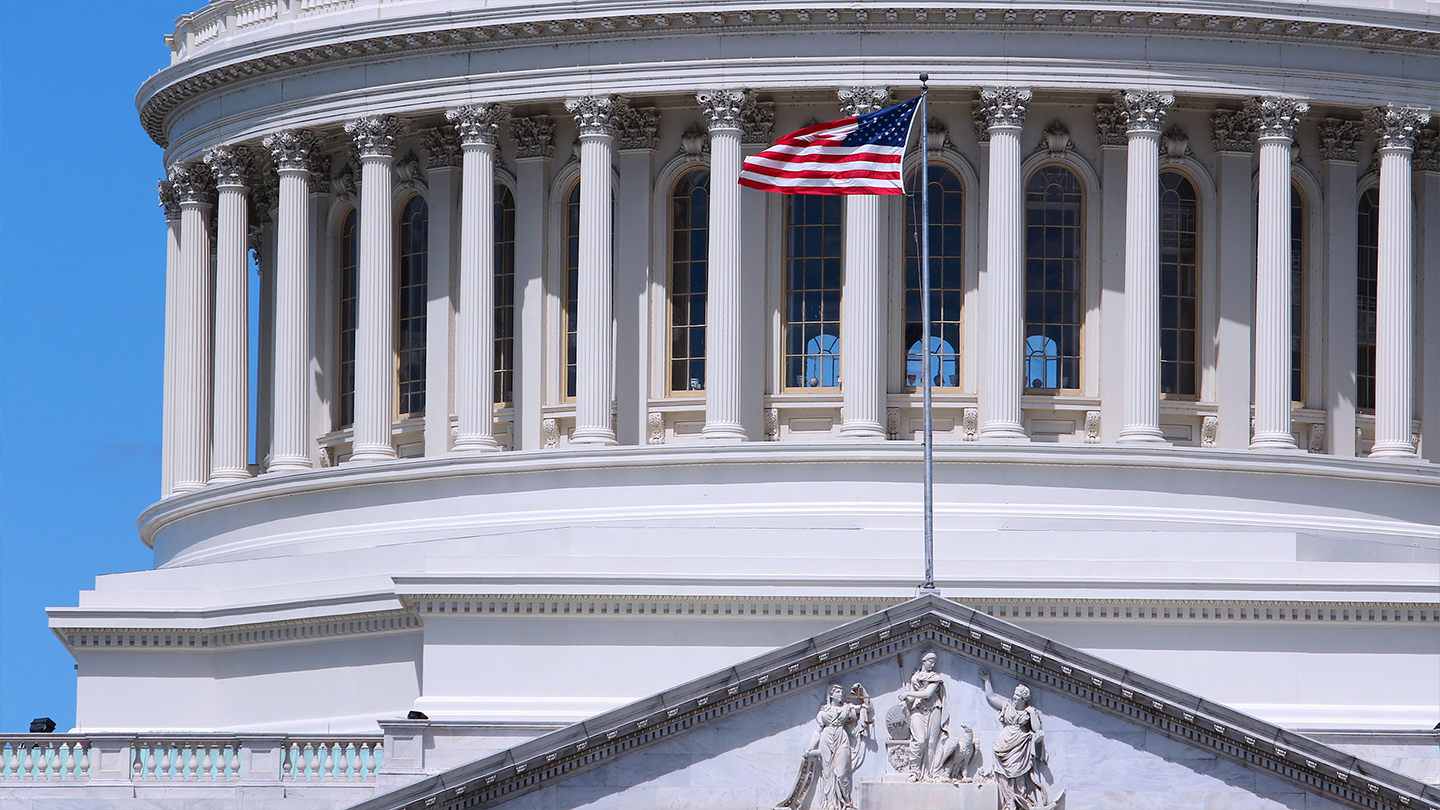
Economic activity in 2025 was more volatile than anticipated, with Liberation Day tariff announcements and the longest government shutdown in history driving economic, business and consumer uncertainty. However, as trade policy discussions progressed, resilient consumer spending and significant AI-infrastructure capital outlays supported trends like GDP growth of 1.8% for the year. Meanwhile, a broad-based moderation in hiring activity over the past several months prompted the Fed to resume its easing cycle this fall, even though inflation remains elevated and tariffs are not yet fully passed through. From here, additional cuts to the Fed Funds rate will depend on data showing further labor market softness and relatively stable pricing trends. Recession risks have abated for now and the One Big Beautiful Bill Act should provide modest stimulus to the economy through the first half of 2026.
1. Economic growth trends likely to remain stable
We expect 2026 U.S. real GDP to expand at a similar 1.8% pace as 2025. After flirting with recession earlier in the year due to Liberation Day volatility, economic growth recovered as broader uncertainty eased. In addition to sustained momentum in AI capex spending and strong corporate earnings growth, consumer spending and business investment are poised to benefit from the OBBBA, lower interest rates, deregulation and less policy disruption.
2. Expect one more cut in this phase of the easing cycle
The broad-based moderation in labor markets through the first eight months of the year prompted 50bp of “insurance cuts” by the Fed this fall, as well as the end to quantitative tightening on Dec. 1. Although the lack of economic data over the past couple of months due to the government shutdown has complicated near-term decision-making, the Fed cut 25bp at the December meeting and we expect another cut in early 2026. If correct, this would result in a target range of 3.25-3.50% before going on hold.
3. U.S. consumer spending in line with historical levels
Low unemployment and high asset prices have supported ongoing consumer spending resilience this year despite still elevated inflation. While inflation-adjusted spending growth has been in line with the long-term trend of roughly 2.5%, there have been notable variances by category and some signs of strain for younger and lower-income consumers. A jump in student loan delinquencies and elevated—yet stable—credit card and auto loan delinquency trends suggest spending growth could slow for some demographics. However, tax refunds from the OBBBA should provide a benefit in 1H26.
4. Policy uncertainty expected to ease, but risks linger
Following a year where policy developments dominated the headlines—from Liberation Day to the longest government shut down in history—overall uncertainty should moderate in 2026 and provide for a more stable environment for businesses and markets. However, notable risks remain, including the upcoming Supreme Court decision on IEEPA tariffs, while the renegotiation of the USMCA could keep uncertainties for cross-border trade and supply chains elevated. Immigration policies may continue to influence labor market dynamics.
5. Labor market momentum slows
Payroll growth decelerated meaningfully in 2025 as business leaders grappled with disruption from tariffs, immigration policies, and market volatility. With low hiring, low firing labor market conditions expected to continue, the unemployment rate could peak in the mid-4% range in the early part of 2026 and wage growth could converge toward its long-term average of 3.5%. As most indicators suggest limited risk of a sharp downturn, labor market slack should increase only slightly. We expect payrolls to average 25k in 1Q, before sequentially recovering over the course of the year, averaging 50k in 2Q, 75k in 3Q and 100k in 4Q.
6. Another year of moderately elevated inflation
We expect inflation to remain above the Fed’s 2% target—in the upper-2% area—through 2026 as tariff passthrough is balanced by moderating rents and lower energy prices. To date, tariff impacts on consumer prices have materialized more gradually than anticipated, although more could be forthcoming. We view tariffs as a one-time increase to prices, and while this is likely to impact consumer purchasing power, it is unlikely to be a material headwind to overall economic growth. As the tariff dust continues to settle, inflation is likely to remain sticky due to limited labor market slack and gradual moderation in wage growth.
7. Housing activity stuck in low gear
U.S. housing activity is expected to remain subdued in 2026 due to a persistent supply shortage, largely driven by mortgage lock-in and historically low turnover in the existing home market. Still elevated mortgage rates, weak affordability and slower population growth are set to weigh on new construction. Rising costs from tariffs and stricter immigration enforcement further dampen the outlook, with housing starts projected to gradually slow to around 1.3 million and real residential investment expected to contract 1.6% next year.
8. AI is here to stay
AI investment has been a major driver of business fixed investment growth over the past two years. The outlook remains strong with consensus estimates suggesting AI-related spending via hyperscaler capex are expected to rise 33% in 2026 after a 69% surge in 2025. AI-related physical capex reported in the national accounts—data center construction, computer and communications equipment—rose 26% inflation adjusted in the four quarters ending 2Q25. Based off current forecasts, we expect the year-on-year rise in physical tech capex, which accounts for 1.5% of GDP, could be half as much in 2026, and half again in 2027.
9. Further dollar weakening to be limited by economic resilience
After declining roughly 10% through the first half of 2025, the dollar stabilized and traded in a relatively tight band over the past several months. U.S. economic resilience relative to other major economies should provide a key support for the dollar in 2026, balancing the foreign exchange headwinds of lower interest rates and improved growth outlook in Europe. Fiscal and monetary policy remain a key source of risk, while trade policy clarity has improved.
10. Refinancing, M&A and AI to lead the deal activity charge
Debt issuance trends in 2026 are expected to benefit from a combination of ongoing and new forming catalysts. The continued trend of refinancing activity is expected to account for the bulk of activity across debt capital markets, though issuance tied to AI-related capex is also gaining momentum. Additionally, the combination of contained tariff uncertainty, completed tax bill, lower interest rates and deregulation tailwinds has supported the outlook for M&A related issuance.
Stats reported in this outlook are as of Dec. 10, 2025.
How J.P. Morgan can help
Our Commercial Banking team helps clients navigate policy uncertainty and evolving economic conditions through scenario-based planning and flexible financial solutions. We combine macro insights with industry expertise to support strategic decision-making across market cycles. Contact a banker to discuss how we can support your business objectives.
JPMorgan Chase Bank, N.A. Member FDIC. Visit jpmorgan.com/commercial-banking/legal-disclaimer for disclosures and disclaimers related to this content.







